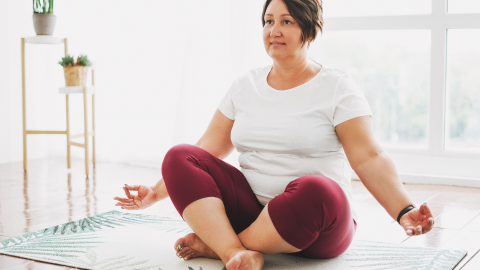If you’ve never done yoga before, you might want to consider rolling out a mat and making it part of your routine. Why?
For people with type 2 diabetes, the use of mind-body practices—things like yoga, deep breathing, and meditation—may further lower blood glucose (blood sugar) levels. Mind-body exercises not only help to quiet and relax the mind, allowing someone to be more present in the moment, but they also may lead to positive changes in the body too.

There are benefits in:
- Yoga, which uses physical poses, concentration, and deep breathing
- Qigong (pronounced chee-gong), which involves meditation, controlled breathing, and movement exercises
- Mindfulness-based stress reduction, a meditation strategy originally designed to manage stress
For some people, engaging in mindfulness activities appear to lower blood glucose (also called blood sugar) as much as some diabetes medications. Of course, yoga, controlled breathing, and other activities are a part of a diabetes treatment plan along with your medications. However, these activities may help some people reach their target blood glucose ranges.
Physical Benefits of Mindfulness Activities
Finding simple ways to manage your blood glucose levels is important, especially because only half of Americans with diabetes actually achieve their blood glucose goal. However, keeping blood glucose levels within your target range helps lower the chance of complications, including heart disease, kidney and nerve damage, and vision problems.
Some other benefits of meditation and mindfulness include:
- Lower blood pressure
- Reduced stress and depression
- Improved pain symptoms
- Better sleep quality
- Weight control
- Good healthy habits
If you are interested in starting yoga or any other mindfulness activity, talk with your care team about which might be best for you. Learn more about getting started with diabetes and exercise.
Written by Amanda Crowe.








